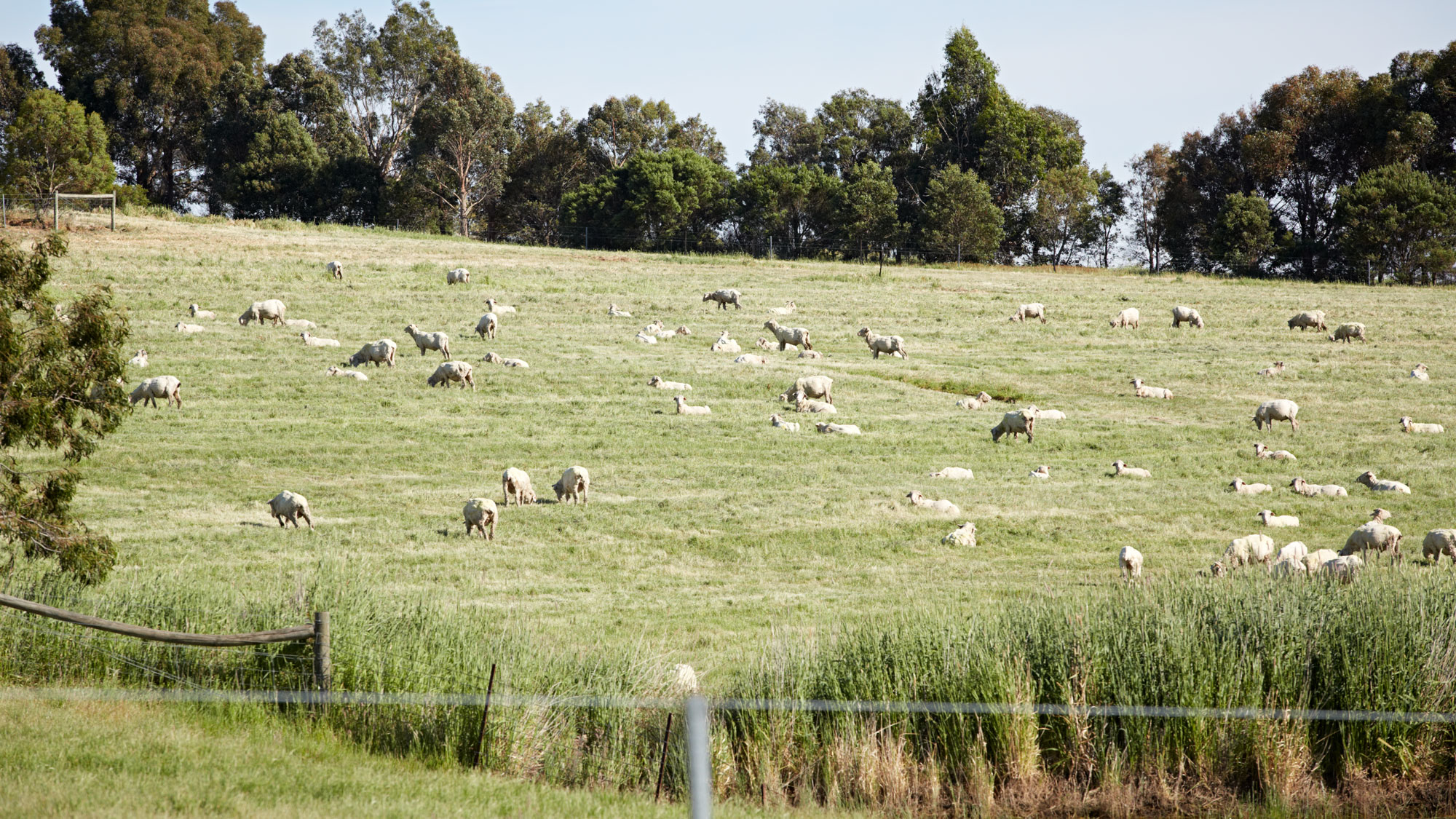Tool 11.10 Management of liver fluke
Management of liver fluke
Liver fluke (Fasciola hepatica) can cause serious production losses, anaemia, bottle jaw and death. Liver fluke is present in all states except Western Australia, but the most at-risk stock are those in south-eastern Australia where there is a suitable habitat for the host snails. This includes the higher rainfall (>600 mm) areas of NSW (typically the tablelands in the eastern part of the state, and nearby coastal areas to the east and slopes to the west), Victoria and Tasmania, and small areas in Queensland and South Australia. Liver fluke may also be found in irrigation areas.
Lifecycle
Liver fluke have two hosts, firstly an aquatic snail (Lymnaeid family) which is 6-25 mm long and has a clockwise or right-hand spiral thread (if the snail is lain on the hand with the tip pointing away from the viewer, the opening is on the left). Snails require water to survive, e.g., in marshy or slow running streams. From the snail, young fluke encyst on pasture that is then grazed by sheep (the second host). The young fluke burrow through the gut and migrate to the liver, finally settling in the bile ducts where they feed on blood.
Young fluke are typically present on pasture from mid- to late-spring. In severe infestations, sheep can die of acute fluke infection by mid-December due to massive numbers of young fluke migrating through the liver. More commonly, adult fluke develop by February. Depending on the season and environment, fluke pickup will continue until early winter. In some regions with warmer climates, fluke will continue to be picked up throughout the year. Fluke snails hibernate in winter when a large proportion of infected snails will die.
Many animals (including wildlife) can carry fluke, so it is difficult to eradicate unless stock are excluded from all waterlogged and swampy areas.
Principles of control
Strategic drenching
The frequency of drenching will vary between regions and farms depending on the local lifecycle and climate.
Triclabendazole has been used as the first-choice drench, because it will kill all ages of liver fluke. Other drenches will only kill adult stages so need to be used selectively. However, resistance to triclabendazole is established in the major fluke areas of eastern Australia and care is required in drench selection.
Typically, it is recommended to drench with triclabendazole in late summer to mid-autumn (April/ May) and if necessary in mid-winter (August) to eliminate fluke picked up in autumn. For the winter drench, an effective adulticide can be used in place of triclabendazole.
In some regions an additional drench may be required in February to stop acute fluke infection killing sheep. On some properties, strategic control is not required but can be based on monitoring. For more information, refer to WormBoss Liver fluke and NSW DPI Primefact 446 Liver fluke disease in cattle and sheep.
Monitoring
Faecal samples can be submitted to your worm egg count laboratory for a ‘sedimentation test’. This will detect adult liver flukes, but not larval stages. To detect all stages of fluke, your vet can submit a blood “liver fluke ELISA” test that can detect infestations as young as 2 weeks.
Some labs also offer a faecal ELISA test that can detect all stages from a faecal sample. Check with your lab for availability.
These tests provide the basis for drenching. With sporadic infestations, fluke monitoring should take place in late summer/early autumn and mid-winter.
Do you know the fluke status of sheep on your property?
If you are uncertain of the fluke status on your property, monitor mobs of sheep grazing waterlogged or swampy paddocks. Alternatively, organise feedback from sheep sold to an abattoir to check for evidence of fluke in livers.
New sheep
If sheep come from a fluke infected area, drench them on arrival with triclabendazole or, if uncertain, do some fluke tests to decide if treatment is necessary. If resistance to triclabendazole or other flukicides is suspected, consult your veterinarian or animal health advisor for advice on treatment.
Control snails
On some farms you can control fluke by fencing off swampy areas. This will stop the lifecycle if all ‘fluke prone’ areas are isolated.
Drench groups
Triclabendazole is the most effective drench that kills all larval stages. Other products do not kill young larval stages but are still effective against adults. There is evidence of widespread resistance to flukicides, so rotation of effective drenches is desirable rather than relying on triclabendazole. Consult your veterinarian or sheep health advisor or visit WormBoss Liver fluke for advice on regional control programs.






